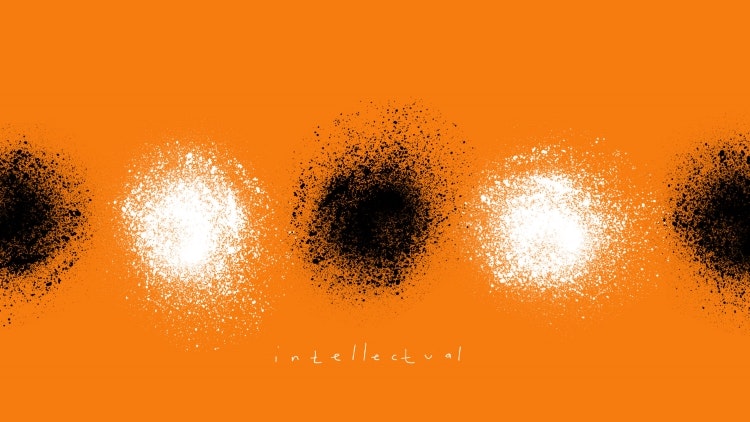When I gained a clear sense of the two main types of creativity, a lot of things suddenly made sense. Peleg Top, who describes himself as a coach for accomplished creatives at a crossroads, told me about them on The Creative Condition podcast. He’d hit a wall, and went through the process most of us will be familiar with – unidentified lack of motivation. Despair. Malaise. A spiritual crisis, he called his. Call it what you like – the unidentified loss of creative spark for our work is a grim experience. What Peleg realised was, he’d been neglecting his emotional creativity, using only intellectual creativity in order to run his design agency, and despite financial success and client satisfaction, he’d burned out and lost his way.
He put it like this:
“I’ve learned of two types of creativity: there’s intellectual creativity and there’s emotional creativity. We get really, really good at the intellectual creativity part because that is creativity for the sake of solving problems. As creatives we love solving problems! We love solving problems with ideas, and then we love channelling our artistic talent to manifest that solution in the world. We spend most of our life in that intellectual creativity space.
“But there’s another part of us – this emotional creativity – that needs to be addressed. It’s how we express our own authentic voice in the world. Who are we? What do we stand for? What do we believe in? If we don’t give that part of ourselves an outlet, that emotional creativity, well, guess what happens? We get stuck. There’s that emotional part of ourselves that wants to express itself. Wants to flow.”
The two, of course, need not be mutually exclusive. What these new titles gave me was a way to step back, look at my practice at any given time, and see what balance of the two types of creativity I had. Ever since I started to put together an illustration portfolio back in 2007, I knew that if I wanted to make a living and enjoy the work, it had to have soul and get my juices flowing. If I made only art that I felt the industry wanted to see, that met current trends, the disconnect from my own passions, personality, experiences, and curiosity would turn me back into my distracted schoolboy self, who couldn’t apply himself to anything that didn’t feel like magic.

Of course, if I only made art for myself, it would be a hell of a task, at such an embryonic stage, to earn a living. It is possible – some people prefer to work another job so they can take their time and do things exclusively on their terms – but it doesn’t work for everyone. Even if I could, I wouldn’t have known where to start. It would be well-suited commissions that scattered crumbs on the path ahead of me.
So, I chose subject matter, potential clients, and shaped a visual identity that aligned with my personality. I collaborated with others in innumerable side projects that brought a great freedom and lack of pressure, and I’d show the bits I loved in my portfolio. Invariably, those bits resonated with more experienced people in the industry and opened unexpected doors into new fields and markets.
When Peleg dropped these two simple descriptions on me, I immediately understood my main need – a constant outlet for my emotional creativity. I’d always worked hard for that, but I never had a name for it, so sometimes it would be left to chance. But I always made or found ways to express myself without any restrictions. Through painting, or writing, or podcasting, or public speaking, I had the power to explore personal ideas, shed sadness, attack injustice, or simply play without an end goal, as if I were still dripping with snot on the nursery school car-themed play mat.
My emotional creativity helps me to ensure I’m on the right course. From time to time, we do need to correct it – because we evolve as we move through our careers and broader lives, and if we don’t adapt our creativity accordingly, the disconnect happens again and we begin to question our ability.
So much of creativity is about duality and balance. I’ve always enjoyed the challenge of commercial brief parameters. My favourite career work has been the stuff that requires equal parts emotional (for me) and intellectual creativity (for a client and their audience). That’s been the case for most of my projects because I saw the need to use my portfolio as a statement of intent as well as a showcase of what I’ve done and can do. That intent brought work that afforded me self-expression.
During my busy client work spells, I get angry with myself for piling the purely emotional side projects high, but I’ve come to find that – as Peleg cautions – if we don’t take care of the emotional part of our creativity, we surrender something crucial, and the thing that filled our hearts with joy becomes merely a job that we don’t love like we once did.
Ben Tallon is exploring “the nature, behaviour and psychology of creativity” as part of The Creative Condition. This is a current podcast and a book is set to follow in late 2023.

- Design disciplines in this article









